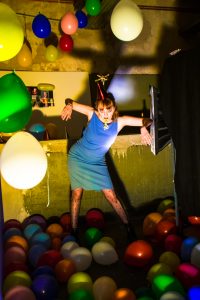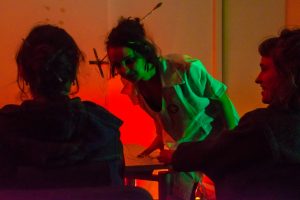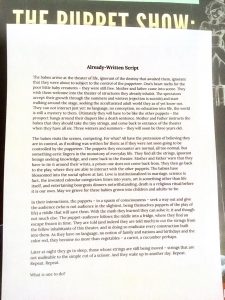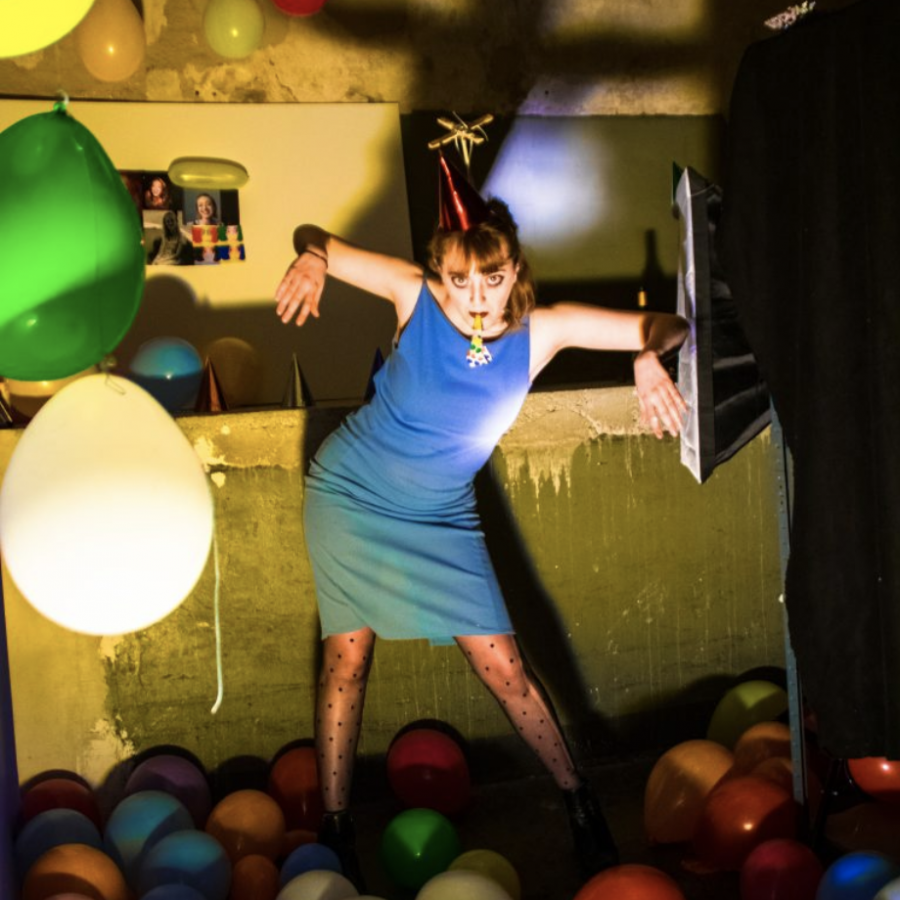
On Thursday, March 8th, the Emancipe Initiative’s interactive puppet play, “The Puppet Show: An Inquiry”, premiered on campus in the Factory gallery space. This initiative, pioneered by first-year EPST student Danny Dubner, and co-lead by academic year student Sara De Monchy, was an opportunity for members of Bard College Berlin to experience non-formal educational practices and engage in a discussion about them. This was only the first instalment of the initiative; it will have more events on campus that involve “philosophy, politics, art and their intersections.”
As an actor in this performance, it became clear as soon as I joined that this was not going to be your typical puppet show. For one thing, there were no puppets — at least not in the classical sense. The actors in the show were both puppets and puppeteers, manipulating the actions of the audience: Danny Dubner, Mandula van den Berg, Sara de Monchy, Giovanna Castronari, Claire August, Veronika Risnovska, Sabrina Slipchenko, Melanija Damjanovic, Sarah Hirsch, Jude Macannuco, Christine van der berg, Bose Sarmiento, and myself. Sara and Danny urged us to embody the creepy puppet role by moving and speaking in a disjointed manner, all while giving us space to come up with our own scenes and dialogue.
There were six separate spaces around the Factory used for performances. A wedding, a mad scientist laboratory, a funeral, a dinner party, a birthday party, and a gallery opening were the scenes, and, as the puppets, we worked to make them as non-conventional as possible. The intention behind creating scenes out of ordinary events was to expose the eeriness in their monotony, allowing the audience to question certain ingrained ideas and structures– for example, “love is institutionalized in marriage,” and “death is a religious ritual before it is our own.” This is why the actors were told to perform in a disturbing fashion: in order to induce a feeling of eeriness. Thus, prompting the audience to the question their conformity to these standards. The first time that the participants walked around the Factory, they were divided into color-based groups—the colors being distinguishable on the diapers they were instructed to wear on their heads. The diapers represented infancy, since it was the participants first time in a new world. The color-coding of these diapers added the element of competition, since each group was instructed to find six strings and six pieces of a map in the shortest time in order to win.

(Credit: Vera Yung)
The participates visited all the rooms and watched a short skit by the performers before being given a string. With all six strings, they were able to take off the diaper and grow into adulthood, and thus into the structures and social norms they weren’t cognizant of in infancy. They then traversed around the Factory another time in order to collect pieces of a map — only now they were part of the scene as well. I, along with Veronika, was a mad scientist. Danny and Sara gave us an idea we had to challenge (“science is fact”), and together Vero and I created a scene about genetic mutation. In the first round, we attempted to create a chimera using a dead cat and a bottle of oil. When that didn’t work, we resorted to searching through the audience during the second round, asking them about their medical histories, trying to find the “perfect” specimen. Having found one, we used their hair to create a formula that we wrote on our scrap of the map and mixed into a concoction of slime. The participates could then escape the room.
The reveal at the end of the show was that the group who collected all the pieces the fastest hadn’t actually won a prize — at least not in the traditional sense. The winners were given sheets of paper that explained how they’d been manipulated. The idea of competition gave them the pretense of control, of thinking they had the power in each scene. In reality, there are more formidable forces who are pulling the strings. The winners were also instructed to cut the strings of the actors, thinking that they were setting them free. But, instead, this cut them off from all their prior constructions: language, family, birthdays… even the color red. Without strings, the puppets became lifeless shells: vegetables. We’re left with this message: everyone is a puppet. This was a powerful part of the performance because it ended the competitive, manic mindset of all the participants who had rushed through the scenes without paying full attention. They were forced to consider the meaning behind the Emancipe Initiative and their involvement in it.
As a puppet and puppeteer, and moreover an observer, I enjoyed how this challenged my idea of education, and I look forward to participating in the events that the Emancipe Initiative generates next.
The Script:


